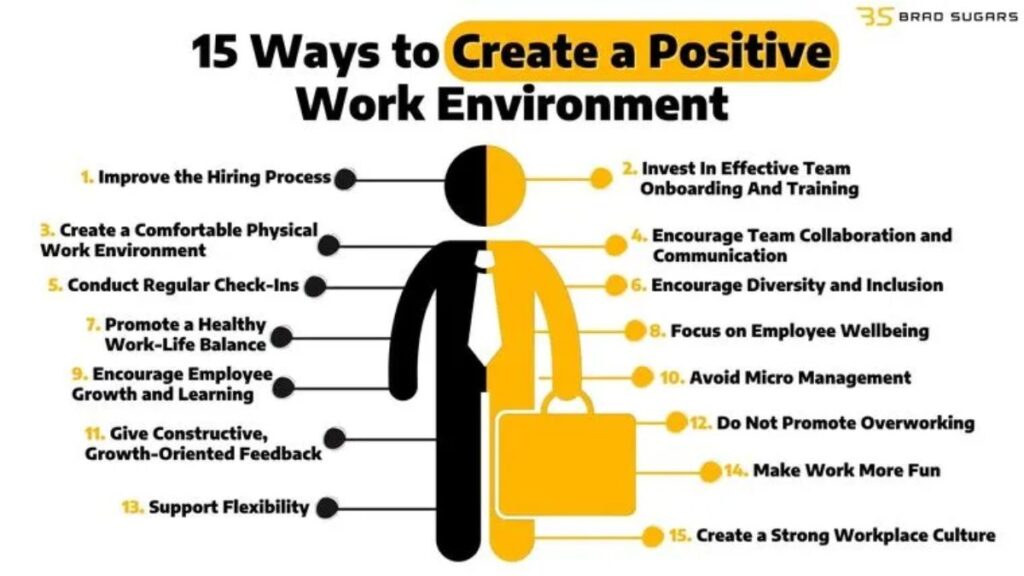In today’s fast-paced world, the workplace is no longer just a physical location where tasks are completed. It has evolved into an environment that plays a crucial role in productivity, creativity, and overall well-being. A motivational workspace can significantly influence our mindset and performance, making it essential to cultivate an environment that inspires and motivates us. This article will explore practical tips for creating a motivational workspace that can enhance productivity, creativity, and comfort, ensuring that you feel energized and inspired every time you sit down to work.
Understand the Importance of a Motivational Workspace
A motivational workspace is more than just a well-decorated office; it’s a space that fosters positivity and encourages productivity. Research has shown that our environment directly affects our mood, energy levels, and even our ability to concentrate. When our workspace is organized, aesthetically pleasing, and tailored to our personal preferences, we are more likely to feel motivated and engaged in our tasks. Conversely, a cluttered or uninspiring environment can lead to stress, distraction, and a significant drop in productivity. Therefore, investing time and resources into creating a motivational workspace can pay off in terms of performance and job satisfaction.
Declutter and Organize Your Space
One of the first steps to creating a motivational workspace is to declutter and organize your area. A cluttered desk can be a significant source of distraction and stress. Take the time to sort through your belongings, removing items that you no longer need or use. Invest in organizational tools such as filing cabinets, desk organizers, and storage bins to help keep your workspace tidy. Consider adopting the “one in, one out” rule, where for every new item you bring into your workspace, you remove an old one. This approach not only helps maintain order but also allows you to assess what you truly need in your environment. An organized space promotes clarity and focus, making it easier to concentrate on your work.
Personalize Your Workspace
Personalization is key to creating a motivational environment. Your workspace should reflect your personality and preferences, which can enhance your emotional connection to the space. Consider incorporating personal items such as photographs, artwork, or inspirational quotes that resonate with you. Plants are another great addition, as they not only add color and life to your workspace but also improve air quality and boost mood. Choose decor that makes you feel good and inspires creativity. Remember, this is your workspace; it should be a place where you feel comfortable and excited to spend time.
Optimize Lighting and Ergonomics
The right lighting and ergonomic setup can significantly impact your comfort and productivity. Natural light is ideal, so if possible, position your desk near a window to take advantage of sunlight. Studies have shown that exposure to natural light can improve mood and energy levels. If natural light is limited, consider investing in high-quality artificial lighting that mimics daylight. Task lighting, such as desk lamps, can also help reduce eye strain and create a more comfortable working environment.
Equally important is the ergonomic setup of your workspace. Ensure that your chair, desk, and computer screen are positioned to promote good posture and reduce strain on your body. An ergonomic chair with proper lumbar support, a desk at the right height, and a monitor positioned at eye level can prevent discomfort and fatigue. Investing in ergonomic accessories like keyboard trays and footrests can further enhance your comfort, allowing you to work efficiently for extended periods.
Create a Comfortable Atmosphere
Comfort is a vital component of a motivational workspace. The temperature, noise level, and overall ambiance of your environment can all affect your ability to focus and stay productive. Ensure that your workspace is at a comfortable temperature, as extreme temperatures can be distracting. If you find that background noise interferes with your concentration, consider using noise-canceling headphones or playing soft music to create a more conducive environment for work.
Additionally, the colors and textures in your workspace can influence your mood and productivity. Choose colors that promote calmness and focus, such as blues and greens, while adding pops of brighter colors to stimulate creativity and energy. Incorporate different textures through rugs, cushions, or wall art to create a warm and inviting atmosphere. By paying attention to these sensory details, you can foster an environment that is not only motivational but also enjoyable to be in.
Set Boundaries and Establish a Routine
To maximize productivity in your workspace, it’s essential to set clear boundaries and establish a consistent routine. Designate specific work hours and communicate these boundaries to others to minimize interruptions. Creating a structured routine helps signal to your brain that it’s time to focus, making it easier to enter a productive mindset. Consider incorporating short breaks into your schedule to recharge and prevent burnout. During these breaks, step away from your workspace, stretch, or take a brief walk to clear your mind and refocus.
Additionally, setting specific goals for each work session can provide a sense of direction and accomplishment. Use tools like to-do lists or digital project management applications to prioritize tasks and track your progress. Celebrate your achievements, no matter how small, as this positive reinforcement can boost your motivation and encourage you to keep pushing forward.
Foster Collaboration and Connection
If you work in a shared space, fostering collaboration and connection with colleagues can enhance motivation and creativity. Create an open and inviting environment where team members feel comfortable sharing ideas and collaborating on projects. Incorporate communal areas such as breakout spaces or coffee stations that encourage informal conversations and brainstorming sessions. Engaging with colleagues can provide fresh perspectives and spark new ideas, ultimately enhancing the motivation of the entire team.
Consider organizing team-building activities or regular check-ins to strengthen relationships and maintain open lines of communication. When individuals feel connected and supported in their workspace, they are more likely to be motivated and committed to their work.
Embrace Technology Wisely
In our digital age, technology plays a significant role in shaping our work environments. Embrace technology that enhances productivity, such as project management tools, communication platforms, and productivity apps. These tools can streamline workflows, facilitate collaboration, and help you stay organized. However, be mindful of the potential for technology to become a distraction. Set boundaries around device usage and consider implementing digital detox periods to maintain focus.
In addition, customize your digital workspace by organizing files and folders to enhance efficiency. A clutter-free digital environment can reduce stress and allow for quick access to important documents, fostering a more productive workflow.
Maintain a Positive Mindset
Finally, maintaining a positive mindset is essential for creating a motivational workspace. Your attitude and perspective can significantly influence your productivity and overall satisfaction at work. Practice gratitude by regularly reflecting on what you appreciate about your job and your workspace. Cultivating a positive mindset can help you navigate challenges and setbacks with resilience and optimism.
Consider incorporating mindfulness practices into your daily routine, such as meditation or deep-breathing exercises, to reduce stress and enhance focus. These practices can help you remain centered and motivated, even in the face of demanding tasks or tight deadlines.
Conclusion
Creating a motivational environment in your workspace is a multifaceted process that involves decluttering, personalizing, optimizing ergonomics, fostering collaboration, and maintaining a positive mindset. By investing time and effort into shaping your workspace, you can cultivate an environment that inspires creativity, enhances productivity, and contributes to your overall well-being. Remember that a motivational workspace is not a one-size-fits-all solution; it should reflect your unique needs and preferences. Embrace these tips and adapt them to suit your style, and watch as your motivation and performance flourish in your newly transformed workspace.






